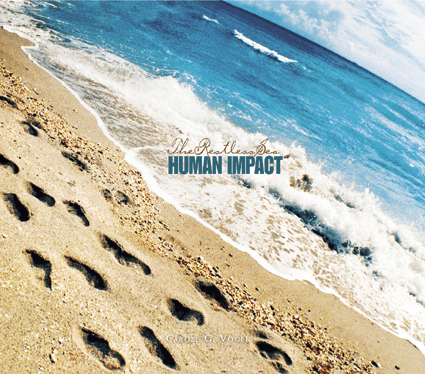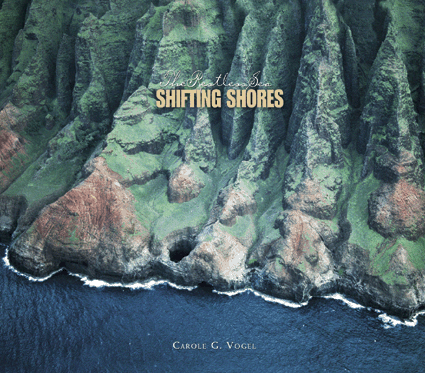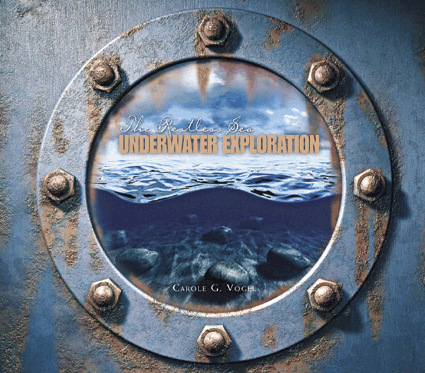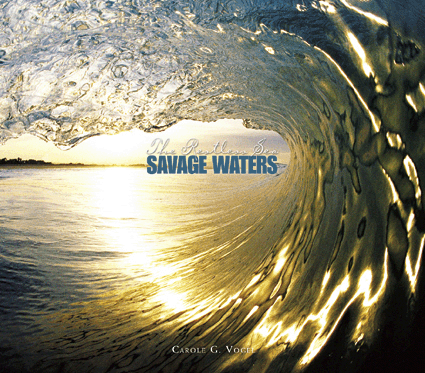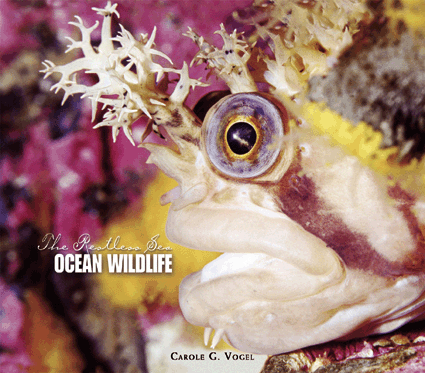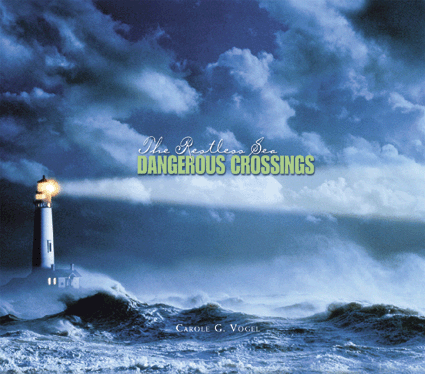The Restless Sea
The Restless Sea, Carole Vogel’s six-book series on the ocean, published by Franklin Watts-Scholastic Library combines stunning photographs with gripping tales of adventure and cutting-edge marine science. In her trademark vivid style, Carole writes about the turbulent rhythm of ocean waters, the astounding power of shifting tectonic plates, and the eerie creatures that survive the dangers of their underwater world. She traces the devastating impact humans have had upon the sea, and scientific exploration of its depths. Vogel tells terrifying true stories about ships–those that survived and those that were lost–after facing the natural fury of the sea.
Titles include: Savage Waters, Shifting Shores, Human Impact, Ocean Wildlife, Dangerous Crossings, and Underwater Exploration. Each book is 80 to 96 pages long. The Restless Sea is available in hard cover and paperback.
Praise for The Restless Sea Series:
BOOK REVIEW- by Carol Standish:
“It is the extraordinary book that becomes more urgently relevant over time. Award-winning children’s author, Carole G. Vogel has written six such books. Each one deals with a discreet and specific aspect of one of the most significant elements of our ocean planet: the ocean.
Published in 2003 for middle-schoolers, the series was promptly neglected by the publisher because of an unfortunate marketing decision. But the publisher did us all a disservice. These books are so well written, designed and illustrated (with spectacular full-page color photographs) that they deserve the attention of every reader—regardless of the age – who is curious about the intricate transactions between the oceans of air and oceans of water which form the life support systems of our world.
Each of the six books in the series presents a stand alone discussion of a particular aspect of ocean science from geologic formation to sources of salinity, the influence of the sun and moon to survival techniques of its amazing and exotic denizens, both plant and animal.
Ocean Wildlife (88pp) as the title states focuses on the fauna and food chains that only exist in the salt water environment. Survival techniques, exotic sensory mechanisms, location devices, tides and tidal zones are some of the subjects that Vogel explains with an easy clarity and a minimum of technical vocabulary. The accompanying photographs which alternate with pages of text are dazzling.
Underwater Exploration (72pp) examines mankind’s efforts to understand and exploit the seas and the ocean basin. Discoveries of many a treasure ship are part of the bargain. Tracing the progress of ocean exploration from the building and deployment of the first bathyscaphe, Trieste in 1953 to modern sonar mapping, Vogel touches on such fascinating subjects as continental drift, the chemicals of life and underwater volcanoes and deep sea vents that can now be observed, measured and analyzed by un-manned deep sea submersibles bristling with sensors.
Dangerous Crossings (72pp) is a rollicking good read about all sorts of disasters which happen to involve the ocean. Killer hurricanes, tidal waves and typhoons which cause ship sinkings and survival stories are only bested by the exploits of pirates then and now. (Perhaps the most remarkable story in this volume is that of the Vietnamese boat people—almost half the Vietnamese boats that made it to sanctuary had been attacked by pirates.)
Savage Waters (73pp) presents an outstanding explanation of the “rhythms of the sea,” that is, tides, currents, wave construction, sea level, drifts, streams and gyres, the sea floor and heavenly bodies which influence them…and the climates they help to create. Beside the usual surfeit of knock-out photographs, the text of his book is augmented with beautifully rendered illustrations of the various phenomena under discussion. I never quite understood how waves formed and moved until I read this explanation and absorbed the accompanying illustrations.
In Shifting Shores (70pp) Vogel discusses the various ways in which the contours of continents change. The shifting of tectonic plates, volcanoes and seamounts, tsunamis meteorites, sinking shores and rising oceans are constantly reshaping the land masses. Human activity also influences the health and condition of the dry ground which we inhabit.
The author neatly exemplifies the consequences of these natural processes and human decisions using examples of two cities – ancient Heraklieon, lying 26 feet under water in the Mediterranean Sea, about 4 miles off the north coast of Egypt, and modern New Orleans, Louisiana today 6 ½ feet below sea level-and sinking.
Scientists theorize that Herakleion was drowned during the eighth century A.D. either by an earthquake or by the flooding of the Nile River which turned the marshy delta land on which the city stood into ooze which simply sank under the excess weight of water.
Vogel draws a parallel between Heraklieon and New Orleans which is built on the Mississippi River’s marshy delta ooze, so clearly vulnerable not so much to earthquakes as floods produced by violent weather. Herakleion thrived for more than a thousand years before succumbing to the sea. Does New Orleans even have half a chance for such longevity?
Each volume in The Restless Sea series stands on its own merit but Human Impact (87pp) is also a coda to the rest of the books in the series. Vogel says it may be the most important book she has ever written. With emphasis on the connectivity of all the ecosystems that exist on the planet, she cites the havoc and disruption that human activity has had on the survivability of the very systems we depend on for our own existence. Overpopulation, overdevelopment of the coastal fringe, over fishing, over fertilizing. Combined with the practice of dumping and draining, ignoring toxic run-off our cavalier (at best) behavior has caused “dead zones” which are growing in size and number. Just think about it.
Both instructive and thoroughly enjoyable, these books are written in clear, economical prose that is easily digestible to both youngsters and adults. They should not only be in every school and public library, but on your own bookshelf (or coffee table, they are that handsome). Dangerous Crossings, Savage Waters, Underwater Exploration and Ocean Wildlife are in stock at Amazon. Human Impact and Shifting Shores seem to be available in paperback only from the secondary marketplace…or harass your nearest book dealer. There are hardcover editions available for each title. Urge your local library to buy the series.”
– Published by MaineHarbors.com, August 2008.
“Dramatic titles and eye-catching covers will draw readers into these attractive, well-written volumes in The Restless Sea series, which successfully blend history and science… Scientific subjects are discussed clearly and concisely, and the texts are as engaging as they are informative… The appealing layouts make excellent use of color graphics and photographs.” –Booklist
“For years, Carole Vogel has been writing consistently excellent children’s books on science, nature, and natural disasters. The Restless Sea is actually a six-book collection for middle- and high-school students on topics ranging from ocean wildlife, to undersea exploration, to environmental problems affecting the oceans. The volumes are generously illustrated with color photographs and the prose, as always is clear, strong, and eminently readable.” – Kenyon College Alumni Bulletin
“Parents and teachers alike should not be without this handsome set of books. There are perfect for helping us and our children realize the importance of nature’s greatest ecosystem, the ocean.”
–Diana Bennett, reviewer for Midwest Book Review
